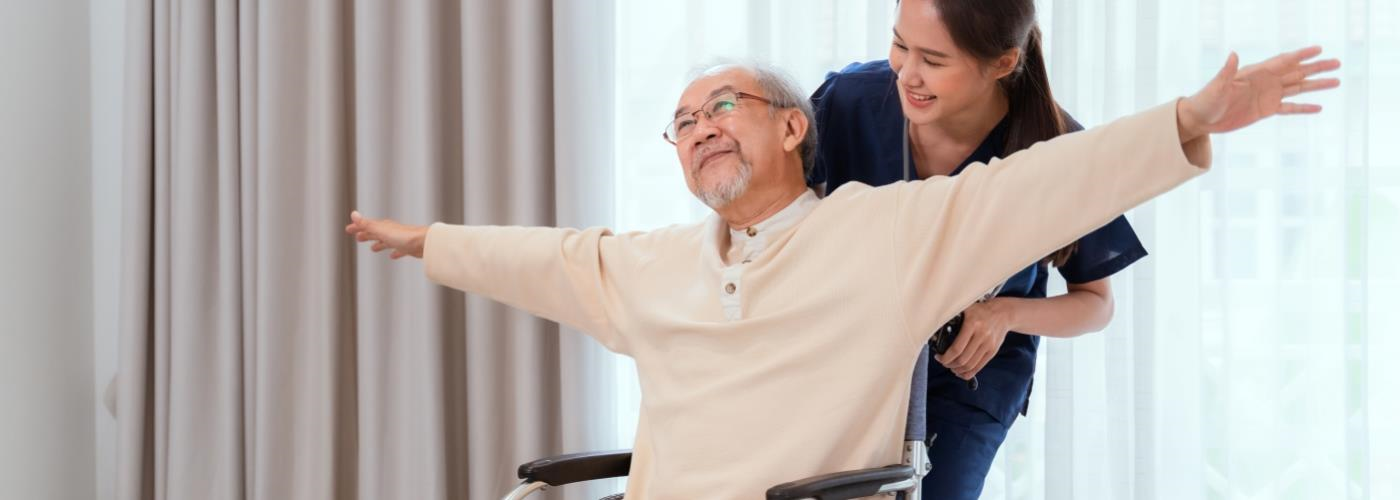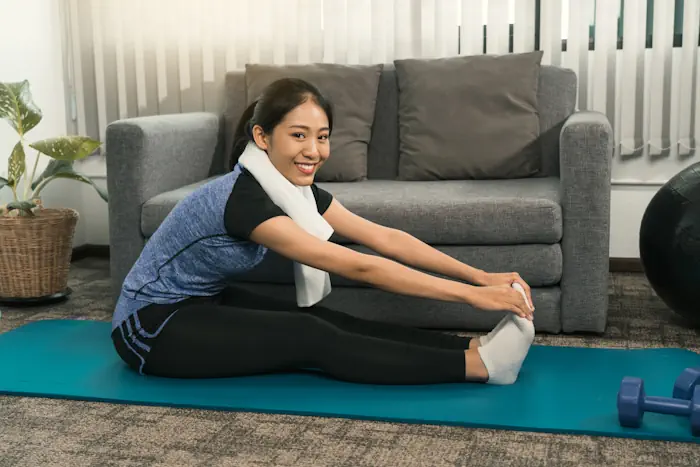Topics
What is rotator cuff?
The rotator cuff comprises four muscles, each with a tendon that links to the upper arm bone (the humerus): Supraspinatus, Infraspinatus, Teres minor and Subscapularis. They are located around the shoulder joint and work together to provide stability and movement to the shoulder.
The supraspinatus muscle is particularly important for lifting the arm, as it is responsible for initiating abduction (lifting the arm away from the body) of the shoulder joint.
In addition to their individual roles, the rotator cuff muscles also work together through co-contractions to control the movement of the humeral head, ensuring that it stays centred within the glenoid cavity (the socket portion of the ball and socket joint). This helps to prevent impingement and other injuries to the shoulder joint.
Rotator cuff injuries are common in athletes who engage in overhead sports (such as baseball, tennis, and swimming) and in older adults who may experience degenerative changes in the shoulder joint.
What is a rotator cuff tear?
The rotator cuff tendon(s) may tear due to an injury, chronic tendinopathy, or both. This could be due to a fall, rapid use of force or a direct blow.
A sudden acute tear may occur when you fall on your arm while it is stretched out. Conversely, it can occur with a quick, jerking move when lifting a heavy object.
A chronic rotator cuff tear develops gradually over time. You are at greater risk if you have persistent tendinitis or impingement syndrome.
There are two types of rotator cuff tears:
- A partial tear occurs when the attachments to the bone are not entirely severed.
- A complete, full-thickness tear indicates that the tendon has been completely compromised.
Rotator cuff strain vs tear
Medically speaking, both rotator cuff tear and strain are the same. This is because both these terms are used to describe inflammation in the cuff tendons or muscles.
Rotator cuff tear vs frozen shoulder
Frozen shoulder and rotator cuff tear exhibit similar symptoms. However, the differentiating sign between a frozen shoulder and a rotator cuff tear is how the shoulder moves.
A frozen shoulder limits the range of shoulder motion for the patient. As a result, when the doctor attempts to move the arm, it may not move beyond a specific point.
On the other hand, in the case of a rotator cuff tear, the patient can lift his hand manually beyond specific points even though he might experience difficulty and pain.
What are the symptoms of rotator cuff tear?
Some people have few or no symptoms of rotator cuff tear. However, here are some of the common symptoms:
- Pain in the shoulder region
- Specific muscle-tendon unit weakness
- Popping sounds when you move your arm
How is a rotator cuff tear diagnosed?
Your doctor would first question your general health and symptoms before conducting a thorough physical examination. Diagnosis is made based on your reported symptoms, physical examination, and investigations.
In most cases, radiographs and other imaging studies are not required to identify rotator cuff tears. However, if the patient's symptoms do not improve following conservative treatment, an imaging test (ultrasound or magnetic resonance imaging (MRI) may be advised.
What are the treatment options available for rotator cuff tears?
The treatment of rotator cuff injuries focuses on reducing tendon discomfort and swelling, preserving, or regaining a normal range of motion, strengthening shoulder muscles, and restoring normal shoulder mechanics.
In many individuals, a diminished ability to move the shoulder results in less frequent usage of the joint, which can further decrease the range of motion and develop into a frozen shoulder.
- Rest: Avoid activities that may aggravate symptoms. Avoiding painful activities will alleviate pressure on the affected area.
- Physiotherapy: Several physical exercises help strengthen your shoulders and restore natural movement. For example, stretches help to relieve the pain and regain flexibility.
- Medications: Nonsteroidal anti-inflammatory drugs (NSAIDs) such as ibuprofen or naproxen are commonly prescribed to reduce pain and swelling.
- Surgery: Surgical repair of a torn rotator cuff depends on your age, activity level, and the severity of the tear. It is usually recommended for those with complete rotator cuff tear, particularly if the patient is active and /or young. There are two ways to repair the rotator cuff: open or arthroscopically.
What will happen if rotator cuff tears are not treated?
The rotator cuff tear will worsen over time if it is not treated. The symptoms might aggravate chronic inflammation, intense pain, loss of strength, and range of motion, making it difficult to perform daily tasks.
Rotator cuff tear exercises and tips
The prime goal of the exercises is to improve flexibility and strength on targeted muscles. The following are some exercises that you may perform under the guidance of your doctor/physiotherapist.
- Gently relax your shoulders and pull the injured arm across the chest as far as possible while keeping the upper arm in a holding position.
- Hold your arm in this position for about 40 seconds and gently relax.
- Repeat this exercise 4 to 5 times on each arm.
For this exercise, you will need an elastic band with comfortable resistance.
- Take a stretch band and make a 3-foot-long loop. Attach the loop to any stable object while tying the ends together.
- Stand holding the band with your elbow bent and at your side.
- Bend your injured elbow at a 90-degree angle and rotate the arm inwards toward your body.
- Return to the initial position and repeat 10 to 12 times.
You will need an elastic band for this exercise as well.
- Tie the ends of elastic bands together after making a 3-foot loop.
- Attach the elastic band to any stable object (you could even choose your doorknob).
- Stand while holding the band.
- Keep your elbow bent and close to your side.
- Gently rotate your arm outwards.
- Return to your initial position and repeat.
- Repeat the exercise 5 to 8 times.
- Lean forward with one hand on a table for support while letting the other arm hang freely.
- Gently swing your arm backwards and forwards like a pendulum.
- Repeat this exercise by moving your arm in a circular motion and moving it from side to side.
- Lie on a flat, firm surface by keeping your affected shoulder below you while bending your arms. If required, you could use a pillow for comfort.
- Use your healthy arm to push your affected arm down. Stop pressing when you can feel tightness in the back of your affected shoulder.
- Maintain this position for about 10 seconds and gently relax.
- Repeat this exercise 5-10 times each session.
- Stand erect to ensure your weight is evenly distributed over both feet.
- Raise your arm and bend your elbow.
- Place the opposite hand on your arm to get support.
- Gently straighten your elbow and bring it overhead.
- Gently lower your arm back behind your head.
- Repeat the whole process 8-10 times.
- Hold the elbow of the injured arm firmly.
- Slowly pull it across the chest to stretch the back of your shoulders.
- Make sure to keep your shoulder blades depressed (to avoid pinching the front of your shoulders).
- Hold this position for 30 to 40 seconds.
- Repeat the movement 2-3 times.
- Lie on your back on a flat surface.
- Bend your elbows at right angles while extending your arms straight out.
- Keep the fingers pointed up.
- Keep your elbows bent and on the floor.
- Gently move your arms in an arc.
- If you feel pain at 90 degrees, bring your elbows down at 45 degrees.
- Repeat the entire exercise 8 to 10 times.
What are the rotator cuff tear exercises to avoid?
There are some exercises and activities which could aggravate your rotator cuff tear and it is, therefore, suggested to avoid them.
- Any exercise with heavy weights.
- Holding your arm in an awkward position.
- Turning, twisting, or rotating your arm.
Make an appointment at Pantai Hospitals
Specific exercises can aid in the healing of rotator cuff tears. However, it is important to note that these exercises should be done under the supervision of a trained physiotherapist.
The rehabilitation team at Pantai Hospitals are trained to provide the best care for our patients. Because each patient is different and will present with their own set of issues and symptoms, treatment plans are personalised.
A dedicated and expert team of Orthopaedic specialists at Pantai Hospital is available for consultation to provide the best care possible.
Get in touch with us to book an appointment today if you have any concerns or questions about rotator cuff tears diagnosis and treatment options.
Pantai Hospitals have been accredited by the Malaysian Society for Quality in Health (MSQH) for its commitment to patient safety and service quality.














